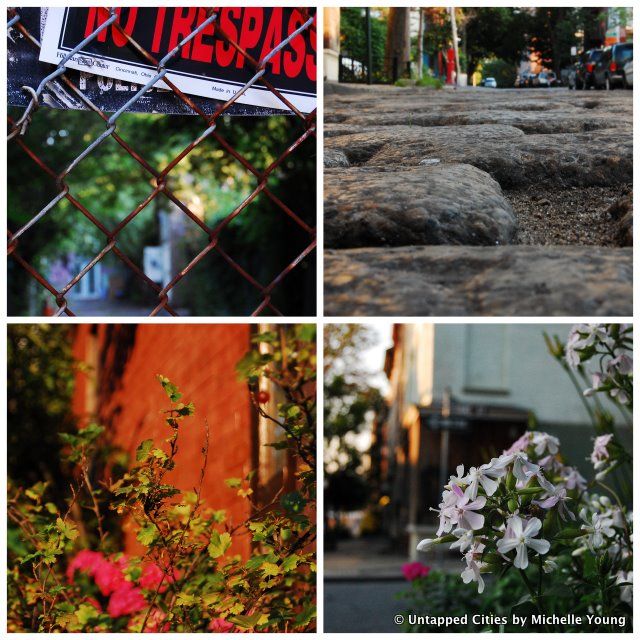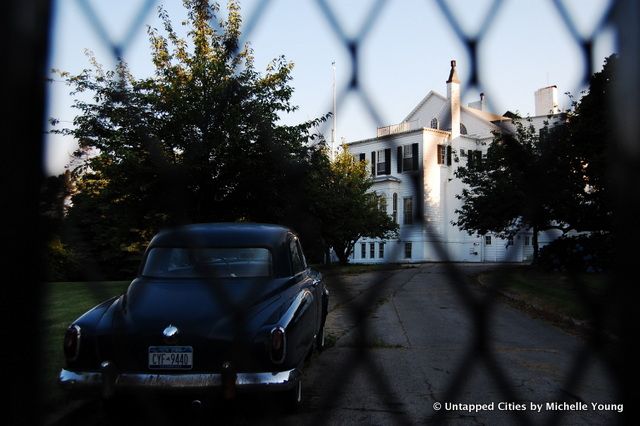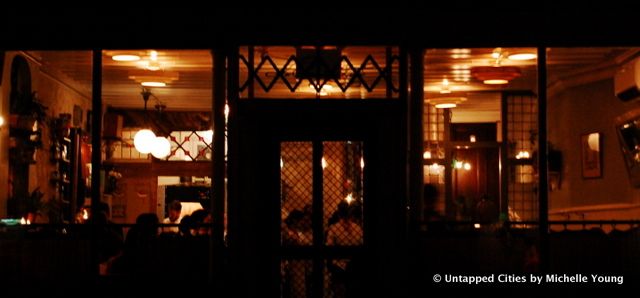

Nestled between symbols of urban industrialization and modern residential development (aka a Con Edison plant and glass condos), Vinegar Hill is a five-block square cobble-stoned neighborhood next to the Manhattan Bridge that seems to have been preserved in time circa the nineteenth century. This break in the time-space continuum is perpetuated by a sudden loss of ambient noise, that constant hum of urban activity, and the conspicuous absence of crowds. Curtained storefronts, iron gates, and unkempt greenery beyond fenced-off properties only further the mystery.
Named after a battle site in the Irish Rebellion, the land that is now Vinegar Hill was purchased in 1800 and settled by Irish working-class immigrants. The residential architecture consists of brownstones and frame houses in either the Federal style or Greek Revival/Italianate styles. Interspersed are factories and industrial buildings, the remnants of a once bustling community. Like most urban historical neighborhoods, Vinegar Hill has shrunk into an enclave as development began to encroach on its periphery. Brownstoner tracks real-estate development and places of interest in the area, but a quick walk in any direction reveals the negotiation between private development and public works (low income-housing projects), neighborhood continuity and transportation initiatives (the Brooklyn-Queens Expressway).

What to See: Commandant’s House (former Federal-style home of Commodore Matthew C. Perry) on the edge of the Brooklyn Navy Yards, now a private mansion. Built circa 1805.

What to Eat: Vinegar Hill House at 72 Hudson Avenue. From the ex-chef of Freemans, continuing the tradition of old world charm in Brooklyn. Camouflaging perfectly in the neighbrohood, the decor built predominantly from repurposed materials, with no sign except for the address “seventy-two” in glass mosaic above the doorway.

How to Get There: Subway – F train to York St., A/C to High St.
All photos by Michelle Young.


